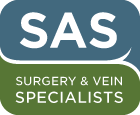Patient Education
Conditions:
+Aneurysm
An aneurysm is an abnormal widening of a portion of an artery, related to weakness in the wall of the blood vessel.
Some common locations for aneurysms include:
- Aorta (the major artery from the heart)
- Brain (cerebral aneurysm)
- Leg (popliteal artery aneurysm)
- Intestine (mesenteric artery aneurysm)
- Splenic artery aneurysm
+Breast Cancer
Breast cancer is a cancer that starts in the tissues of the breast.
There are two main types of breast cancer:
- Ductal carcinoma starts in the tubes (ducts) that move milk from the breast to the nipple. Most breast cancers are of this type.
- Lobular carcinoma starts in parts of the breast, called lobules, that produce milk.
+Gastro Esophageal Reflux Disease
Gastroesophageal reflux disease (GERD) is a condition in which food or liquid travels backwards from the stomach to the esophagus (the tube from the mouth to the stomach). This action can irritate the esophagus, causing heartburn and other symptoms.
+Hernias
A hernia occurs when part of an organ (usually the intestines) sticks through a weak point or tear in the thin muscular wall that holds the abdominal organs in place.
There are several types of hernias, based on where they occur:
- Inguinal hernia appears as a bulge in the groin or scrotum. This type is more common in men than women.
- Femoral hernia appears as a bulge in the upper thigh. This type is more common in women than in men.
- Incisional hernia can occur through a scar if you have had abdominal surgery.
- Umbilical hernia appears as a bulge around the belly button. It occurs when the muscle around the navel doesn’t close completely.
Surgeries & Surgical Terms:
+Appendectomy
An appendectomy is surgery to remove the appendix. The appendix is a finger-shaped sac extending from the first part of the large intestine. It is removed when it becomes inflamed or infected.
+Bypass Surgery for Blocked Arteries (Aorta, Femoral - Leg)
Bypass Surgery involves moving a healthy artery or vein from one part of your body and using it to re-route blood flow around a blocked or narrowed coronary artery.
